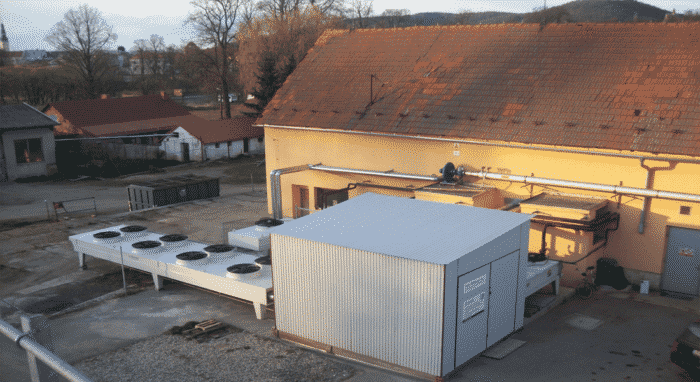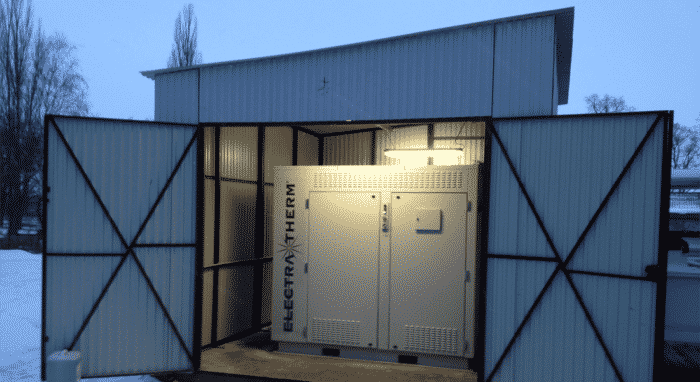Application: Biogas – Engine Waste Heat Recovery
Power Output: 40 kWe
Thermal Input: 500 kWth
Hot Water Inlet Temperature: 92°C
ElectraTherm’s Power+ generates fuel-free, emission free power from low temperature waste heat. In the Czech Republic, ElectraTherm’s Eastern European distributor, GB Consulting, commissioned the machine in February at a biogas plant to convert waste heat to power and increase energy efficiency on site. To date, the machine has maintained over 95% uptime.
The Power+ was added to an existing biogas power facility producing 900kWe. The two MWM internal combustion engines are equipped with an exhaust gas heat exchanger designed to combine both the heat available in the exhaust and the heat available in the jacket water into a single heat stream. The waste heat from the engines is used to heat the anaerobic digestion process, and excess heat not needed to sustain the anaerobic digestion process is utilized by the Power+ to produce fossil-fuel free electricity 24/7.
The anaerobic digestion process at this site uses a corn silage and manure slurry/mixture as the fuel source. The corn and manure are loaded into a self-feeding hopper. From the hopper, the resulting biomass is pumped to the digester, where methane is produced through anaerobic digestion. The methane in turn fuels the engines. With the addition of the Power+, excess heat is used to generate approximately 5% more electricity and reduces the electricity needed to reject this excess heat through radiator fans. This lowers the customer’s onsite power demands and improves site economics.
ElectraTherm uses Organic Rankine Cycle and patented technologies to generate electricity from waste heat. The process begins with hot water entering the Power+ at 86-92°C, where it heats a working fluid into a pressurized vapor. The high pressure vapor expands through ElectraTherm’s patented twin screw power block, spinning an electric generator rated for up to 50kWe output. After turning the expander, the vapor is condensed back into a liquid through the use of an external air cooled condenser. After condensing, the working fluid flows back to the evaporator to repeat the process.


